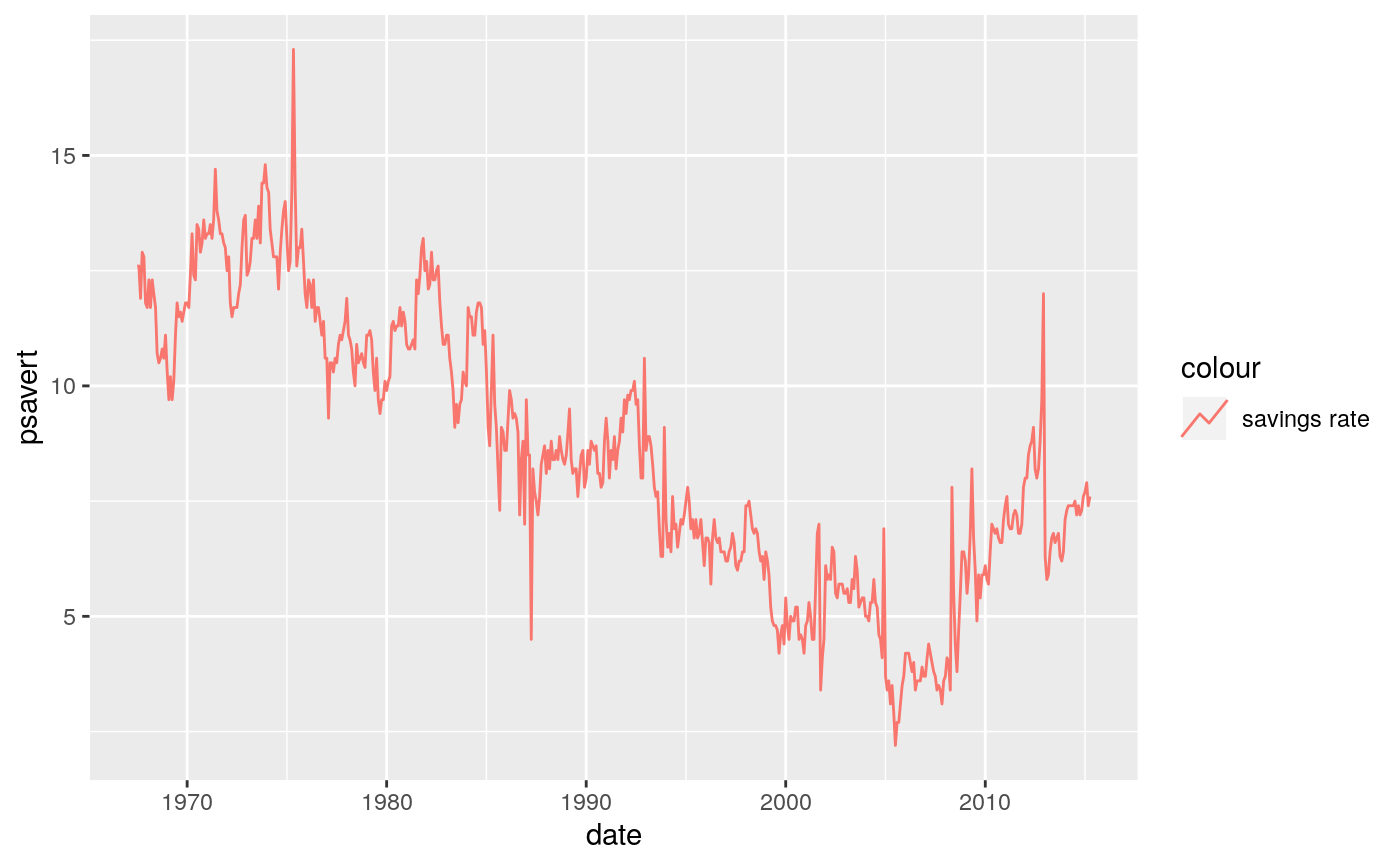Each geom has an associated function that draws the key when the geom needs
to be displayed in a legend. These functions are called draw_key_*(), where
* stands for the name of the respective key glyph. The key glyphs can be
customized for individual geoms by providing a geom with the key_glyph
argument (see layer() or examples below.)
draw_key_point(data, params, size) draw_key_abline(data, params, size) draw_key_rect(data, params, size) draw_key_polygon(data, params, size) draw_key_blank(data, params, size) draw_key_boxplot(data, params, size) draw_key_crossbar(data, params, size) draw_key_path(data, params, size) draw_key_vpath(data, params, size) draw_key_dotplot(data, params, size) draw_key_pointrange(data, params, size) draw_key_smooth(data, params, size) draw_key_text(data, params, size) draw_key_label(data, params, size) draw_key_vline(data, params, size) draw_key_timeseries(data, params, size)
Arguments
| data | A single row data frame containing the scaled aesthetics to display in this key |
|---|---|
| params | A list of additional parameters supplied to the geom. |
| size | Width and height of key in mm. |
Value
A grid grob.
Examples
p <- ggplot(economics, aes(date, psavert, color = "savings rate")) # key glyphs can be specified by their name p + geom_line(key_glyph = "timeseries")

